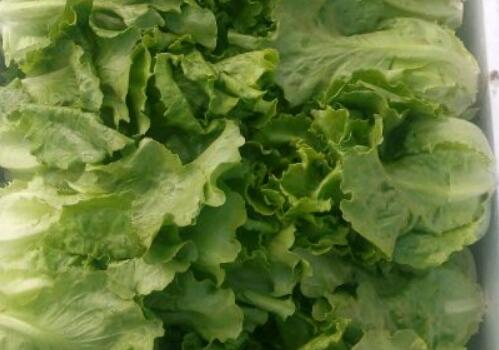Is lettuce genetically modified? When was it introduced into China? Is it better to eat it raw or cooked? Attached planting management technology
Lettuce is also known as leaf lettuce, goose lettuce, lettuce, mai Tsai lettuce, in recent years, the cultivation area has expanded rapidly, lettuce has also entered the table of ordinary people from hotels and restaurants. Is the lettuce genetically modified? When was it introduced into China? Is it better to eat it raw or cooked? What are the planting management techniques? It is reported that lettuce is not genetically modified. At present, in addition to large-scale imports of GM soybeans and corn, other GM vegetables are not common. Although genetically modified tomatoes and other genetically modified vegetables have been approved in China, they have been basically eliminated around the world because of their thick skin and poor taste.

When was lettuce introduced into China?
1. Lettuce is native to the Euro-Mediterranean coast and is domesticated from wild species. The ancient Greeks and Romans ate it first.
2. Lettuce has been introduced into China for a long time, and its specific age cannot be tested. It has been at least 600 years since it was introduced into China. However, the Guan Kiln in Shishan Town, Nanhai, has a history of more than 1100 years, which originated from the five dynasties and Ten Kingdoms at the end of the Tang Dynasty. There are many unique folk cultures, the most prominent of which is the official kiln lettuce meeting, which has lasted for nearly 600 years.
Is it better to eat lettuce raw or cooked?
1. Lettuce can be eaten raw.
In our daily life, carrots, white radishes, tomatoes, cucumbers, cabbage hearts, sesame yams, onions, onions, garlic and other vegetables can be eaten raw, and lettuce is no exception. However, when eating lettuce, add a small amount of salt, monosodium glutamate, sugar, vinegar, soy sauce, sesame oil and other flavor, more delicious.
2. Lettuce is more nutritious when eaten raw, but it is not well absorbed. And lettuce is safer to eat when cooked.
Although raw lettuce has a lot of nutrition retention and high vitamin C absorption, the absorption effect of other nutrients is very poor. After chopping lettuce, stir-fry with a small amount of vegetable oil, and then eat it, compared with raw food, the absorption rate of nutrients can be increased by 10 times, therefore, lettuce is more suitable for cooked food.
3. The benefits of eating raw lettuce:
(1) eating raw lettuce is crisp and delicious, refreshing and pleasant.
(2) eating raw lettuce is more nutritious than cooked lettuce, which will certainly destroy the nutrients in vegetables.
(3) most vegetables contain an immune substance-interferon inducer, which acts on the interferon gene of human cells and has the effect of inhibiting human cell carcinogenesis and anti-virus infection. And this "interferon inducer" can not withstand high temperature, only raw vegetables can play its role.
Attached: lettuce planting management technology
1. Soil selection: choose slightly acidic and saturated soil with fertile, rich organic matter, strong water and fertility conservation, good ventilation and convenient drainage and irrigation.
2. Variety selection: variety selection is mainly "glass raw lai", "heading lettuce", "mosaic lettuce" and "Caesar" and so on.
3. Sowing and raising seedlings: the general sowing time is from August to February of the following year, and it is suitable for sowing from mid-October to mid-December, and it can also be sowed in the first ten days of March and early July, but the growth period is short and the yield is low. It was cultivated in greenhouse or small shed in winter and early spring, and in sunshade net or shade shed in summer.
4. The seedling age of "glass lettuce" is about 25 days, it can be planted with 4-6 true leaves, and the row spacing is 14 cm × 18 cm. The seedling age of "heading lettuce" is 30-35 days, and it is planted with 5-6 true leaves, the row spacing is 17 cm × 20 cm, and the border width is 0.8 m-0.9 m. 4000-5000 kg of organic fertilizer, 20 kg of superphosphate, or 50 kg of compound fertilizer were applied to every 667m2 of soil. Soil should be taken to protect the root when planting, and the root water should be watered in time. The planting depth is appropriate not to bury the heart leaves, and if planted in the high temperature season, the scaffolding should be built in the morning of the planting day, covering the sunshade net, and then cut after 4: 00 p. M. Cultivation in winter and spring can be covered with plastic film. In greenhouse cultivation, the daytime temperature should be controlled at 12: 22 ℃, the temperature should be kept warm if the temperature is too low, and the film should be ventilated and cooled if the temperature is too high (more than 24 ℃). In general, the greenhouse skirt can be opened.
5. Field management: lettuce needs more fertilizer, so it should be applied frequently and fertilized. a small amount of available nitrogen fertilizer should be applied 5-6 days after planting, 15-20 kg per mu after 15-20 days, 10-15 kg after 25-30 days, but human feces and urine should not be used as topdressing in the middle and later stages. The need for water is the largest after planting. It should be watered timely according to the weather and soil moisture after slow seedling, generally every 5-6 days, and should not be excessive in the middle and later stages.
6. Pest control: aphids are mostly harmed in autumn, winter and spring, and can be sprayed with 40% dimethoate emulsion 600,800 times or 50% aphid spray 2 times. Sclerotinia disease mostly occurs in 2-3 months, and can be sprayed with 1000-1500 times of 70% thiophanate wettable powder or 50% paracetamol powder. Soft rot is easy to occur in high temperature and rainy months, which can be controlled by spraying 47% Garinon wettable powder 1000 times, or 77% Jiaoda wettable powder by spraying, and the drug can be stopped 15 days before harvest.
Time: 2019-03-17 Click:
- Prev

What is the effect and function of Dutch national flower tulip? What kinds do you have? When will the seeds be sown?
Tulips, single terminal flowers, large and gorgeous, tepals red or mixed with white and yellow, sometimes white or yellow, are popular because of their bright colors. Do you know what the effect and function of tulips are besides being good-looking? What kinds do you have? When will the seeds be sown?
- Next

What are the planting methods of red plum seeds in Li Yakai? What's the difference between dried plum and preserved plum? How much is one?
Red plum is a kind of plum blossom, this kind of plant can be used in gardens, green spaces, gardens, scenic spots, isolated planting, cluster planting, group planting, etc.; it can also be planted naturally in front of the house, on the slope, between stones and by the roadside. So do you know the planting methods of red plum seeds? What's the difference between dried plum and preserved plum? How much is it per tree?
Related
- Fuxing push coffee new agricultural production and marketing class: lack of small-scale processing plants
- Jujube rice field leisure farm deep ploughing Yilan for five years to create a space for organic food and play
- Nongyu Farm-A trial of organic papaya for brave women with advanced technology
- Four points for attention in the prevention and control of diseases and insect pests of edible fungi
- How to add nutrient solution to Edible Fungi
- Is there any good way to control edible fungus mites?
- Open Inoculation Technology of Edible Fungi
- Is there any clever way to use fertilizer for edible fungus in winter?
- What agents are used to kill the pathogens of edible fungi in the mushroom shed?
- Rapid drying of Edible Fungi

